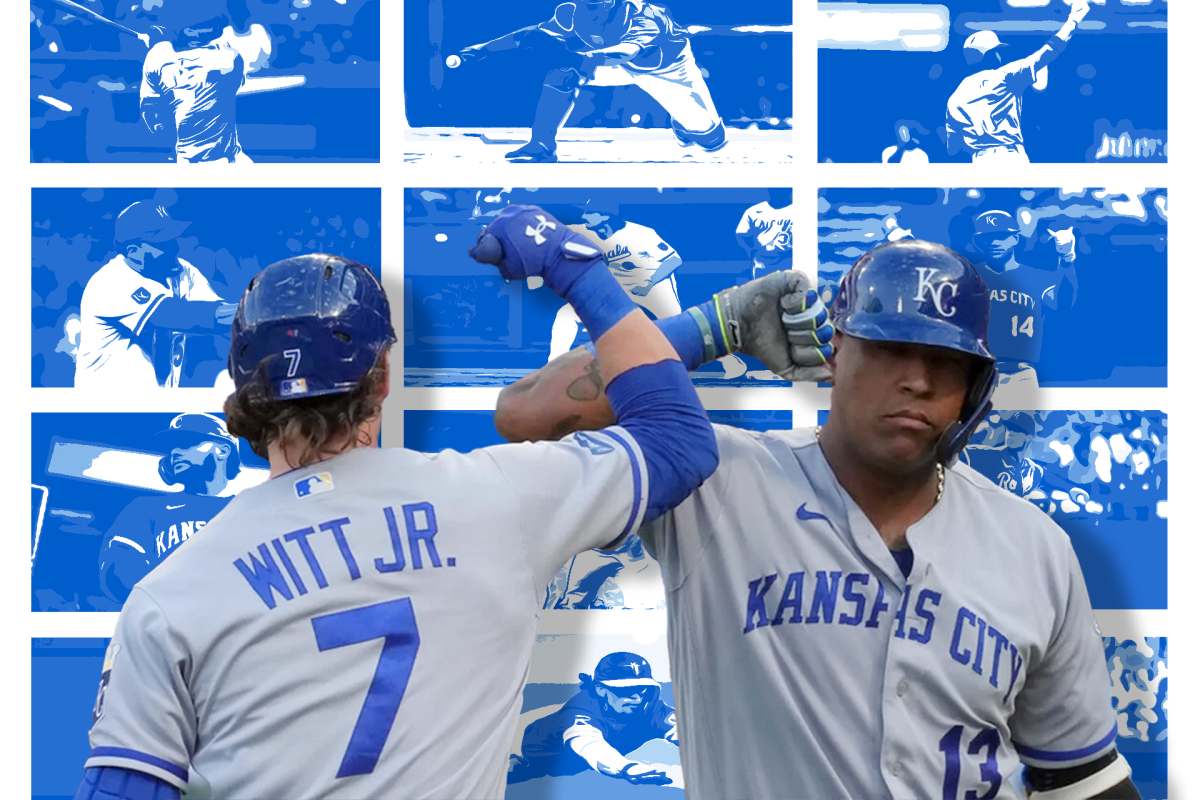The San Francisco Giants just completed their second world championship season in two years, sweeping the star-laden Detroit Tigers in a series that zipped by quicker than one of Justin Verlander’s late-game fastballs. Pop, pop, pop, pop. Four games, three Panda homers, two shutouts and one collectively fascinating team performance.
Manager Bruce Bochy has had an incredible stretch at the helm in San Francisco. Since the promotion of now MVP-caliber catcher Buster Posey in May 2010, the Giants have been 269-201, an astounding 68 games over .500 including postseason play, and have won two more World Series titles in three seasons than they did in the 15 years their roster featured the best player on the planet.
No matter how many parades have shuffled past McCovey Cove in recent years, the stories dominating San Francisco — and the baseball world in general — in the coming months will center on that former Giant more than any of the current ones. Barry Bonds — with his 762 home runs, 14 All-Star nods and seven MVPs — is up for election into the MLB Hall of Fame this year.
If you were just dropped down yesterday from a spaceship and saw the numbers, Bonds is more than a slam-dunk Hall of Famer. He’s Vince Carter in the 2000 All-Star Weekend, the undisputed best. But there is so much clouding his candidacy. Bonds’ head, which seemed to grow substantially during the course of his career, is like a postcard from the Steroid Era, a shady time in the sport’s history of needles and head-turning that MLB has tried vehemently to rid itself of in the past five years.
But the past cannot be changed. Even after being convicted on a count of obstruction of justice earlier this year in a case in which the government tried to prove he lied to Congress about his alleged drug use, Bonds is still up for election come 2013. And on his resume are still all the Gold Gloves, all the Silver Sluggers and all the dingers.
And that should be enough to get him in.
—–
The Hall of Fame is amphibious in nature.
It exists in two distinct, seasonal forms. Most months of the year, there is the tadpole discussion period, when everyone and their mothers debate about who should get in, who shouldn’t and then, after the official voting in December, who got snubbed, why they got snubbed and who will have to wait for next year or the year after the that or the year after that. Then the summer rolls around and, for a month or two, the debating is put on hold in honor of those elected, and they are celebrated with a ceremony in Cooperstown, N.Y., to punctuate their status as the latest immortal frogs.
The Great Steroid Debate has clouded this process with controversy and doubt. People don’t like their frogs on drugs.
The voters individually decide how they wish to choose who will complete the metamorphosis from baseball player to legend. There is the standard approach, which measures the all-time greats based on a series of statistical milestone plateaus (think 500 HR, 3,000 hits and 300 W); the positional method, which puts into perspective numbers put up by players based on other players who played their position, even if those numbers aren’t even in the same galaxy as the aforementioned plateaus (think Brooks Robinson, Roy Campenella and Yogi Berra — being a multiple-time World Series Champion tends to give these numbers an extra boost); and the progressive model, which seems to shun overall statistics completely and instead lauds players who had exceptional primes, dominated “their” eras and therefore “feel” like Hall of Famers. The inductions of Jim Rice, Andre Dawson and, most recently, Barry Larkin are prime examples of the recent personification of this thinking.
Basically, there are three ways to make the Hall of Fame: Either you were as good as everyone else ever, you were as good as the best players historically at your position or you were really, really good in the time you played.
The third way of thinking has become so prominent in Hall of Fame voting because of the issue of performance-enhancing drugs, the boom in statistical greatness they produced and the murkiness that still encompasses the issue and leaves us without the identity of many violators. Is 500 home runs still the benchmark for what makes a great power hitter? With the increase in run production and dime-a-dozen, hard-throwing pitchers — both which have attributed to the evolution of the bullpen and the demise of the win as a meaningful statistic — does a starter still need 300 wins to be considered “great”? Whose numbers are legitimate? And for the players whose numbers are, to whom do we compare them: their peers or their predecessors?
Writers have spoken pretty loudly in recent years about where they stand on the issue. Mark McGwire, who admitted to steroid use, hasn’t come close to election in six years on the ballot despite his 563 career home runs. Rafael Palmeiro, who reached seemingly every necessary plateau during his playing days, hasn’t fared better than 12.6 percent of the vote in his first two years of eligibility after testing positive for a banned substance in 2005. It is assumed that in 2013, Bonds, Roger Clemens, Sammy Sosa, Mike Piazza and others will be denied admission to the Hall because of their probable ties to steroids, while Jack Morris, with his 3.90 career ERA and squeaky-clean record, will get in. The writers, collectively, have pretty much made it clear that if they think you cheated, they’re not voting for you.
—–
Two major monkey wrenches were thrown into that line of thinking earlier this year. First, Clemens was acquitted of perjury after the U.S. government spent $120 million trying to prove he lied to Congress when he vehemently denied his alleged steroid use in 2008. Then, in August, Freddy Galvis and Marlon Byrd were suspended by the MLB for testing positive for banned substances. Whom, you might ask? That would be Galvis, the 5-foot-10-inch, 170-pound Philly second baseman with 11 career home runs in almost six professional seasons, and Byrd, the 34-year-old journeyman who was cut by both the Cubs and the Red Sox in a span of two months.
Jose Canseco estimated in his book “Juiced” that 85 percent of MLB players were on steroids during his playing days, and then went on to incriminate a slew of big-time names, from McGwire to Palmeiro to Alex Rodriguez. Say what you want about the guy, but he hasn’t been proven wrong yet, and the fact mediocre players are still getting caught today makes you wonder just how many unlikely candidates were juicing back in the days before testing — in the days of Bonds, Sosa and Piazza, whose judgment days are coming soon, and the days of Clemens, whom no one can prove guilty.
But even if they are guilty, what are they guilty of? Cheating? That word implies they had an unfair edge over the majority. Look at the list of players who have tested positive and have been banned by the MLB. How many of them are in the statistical 1 percent? Two: Palmeiro and Manny Ramirez. The rest are the game’s laymen: the average Joes, the Neifi Perezs, J.C. Romeros and Jamal Strongs of the world. Make no mistake — McGwire, Palmeiro, Bonds and Co. weren’t bullies, getting bigger and hitting bombs while everyone else sat there twiddling their thumbs and staying out of their way, hoping they wouldn’t notice them from across the cafeteria and take their lunch money. If everyone’s stealing from the Monopoly bank, you’re not cheating by swiping an extra $20 for a hotel.
The validity of Canseco’s 85 percent proclamation is unclear and probably always will be, but looking back at the statistically anomalous seasons of the likes of Brady Anderson (1996), Bret Boone (2001) and Luis Gonzalez (2001), and then at the players who got busted after testing was implemented, it’s hard to imagine he was far off. If a writer is using the progressive thinking when casting his Hall of Fame ballot, the theory that compares players to other players of their time — the same theory and only logical justification for inductions of the likes of Dawson, Rice and Larkin (not to mention Sandy Koufax) — then how can you not vote for some of these guys?
Instead of comparing the allegedly (because who knows?) clean minority to the morally rotten druggies, proven users need be compared to the swarms of their long-forgotten but still guilty co-workers. You can’t say McGwire’s peers weren’t doing steroids, and you can’t say he didn’t dominate his peers. You can’t say that in a world of steroid users, Bonds wasn’t _the_ best steroid user. And you can’t just disregard an entire era and leave its icons for dead, even if you disagree with their actions.
Bonds, Clemens and McGwire were all peers of Larkin. Your opinion of the steroid issue aside, you can’t say they weren’t all better players than Barry Larkin. It can’t be an accurate Hall of Fame if he’s in it and they’re not.
***
But Larkin and Bonds are incomparable because Larkin played clean.
How do you know that? People can cite Jeff Bagwell and Jim Thome’s lack of ties to steroids in the support rallies for their enshrinement in Cooperstown. I’m not saying Larkin or Bagwell or Thome did steroids. But I’m not saying they’re definitely clean, either, because nobody knows. That’s the thing: Nobody knows. Baseball has one rat, _one_, and though Canseco played for a lot of teams, he didn’t cross paths with every player who was ever in the league with him.
He never played with Larkin, Bagwell or Thome. And the Mitchell Report, our only non-Cansecoian steroid almanac, wasn’t released until after Larkin and Bagwell had retired and still sports dozens of unreleased names, not to mention that some implications in the report were obtained by testimonies of just single witnesses, like in the case of Clemens and his estranged trainer Brian McNamee.
So why do we assume Larkin was clean? Because he never played with Canseco? Because he’s on “Baseball Tonight”? Looking strictly at the numbers and given how many times his seasons were cut short due to muscle injuries, there’s probably a better chance he wasn’t.
—–
Overall, we know so little about who did what that it’s possible to even call Dawson’s career into question. Look at the numbers for the outfielder who was enshrined in Cooperstown in 2010 after 13 years of being not good enough on the ballot. The Hawk averaged a slash line of .285/23/90 from 1982-86, his age between 27 and 31, before exploding in 1987 for a .287/49/137 line and the National League Most Valuable Player.
Let’s repeat.
In 1987, the year McGwire and Canseco became the Bash Bros, future Hall of Famer Andre Dawson improved his prime year averages by 26 home runs and 47 RBI. TWENTY-SIX HOME RUNS AND 47 RBI.
1987 is Dawson’s signature season. It is what finally cemented his place in Cooperstown among the greats after toiling in maybe mediocrity for his entire retired life. He would never repeat those numbers again in his career, and nobody ever points out just how much of a statistical aberration his MVP season actually was. Dawson’s peers that year were doing steroids. According to Canseco, one of his peers, they had been around for a while.
Did Dawson do steroids? That is unclear. What is clear is though we do know some of the stars that were, we should really learn more about just how unbalanced — or not — the playing field actually was before we blackball them forever.







